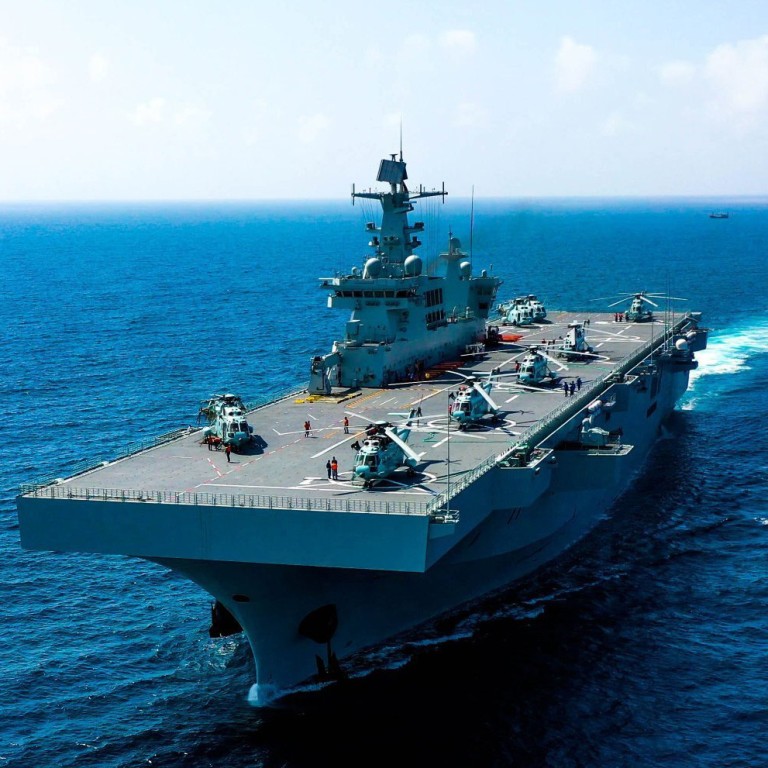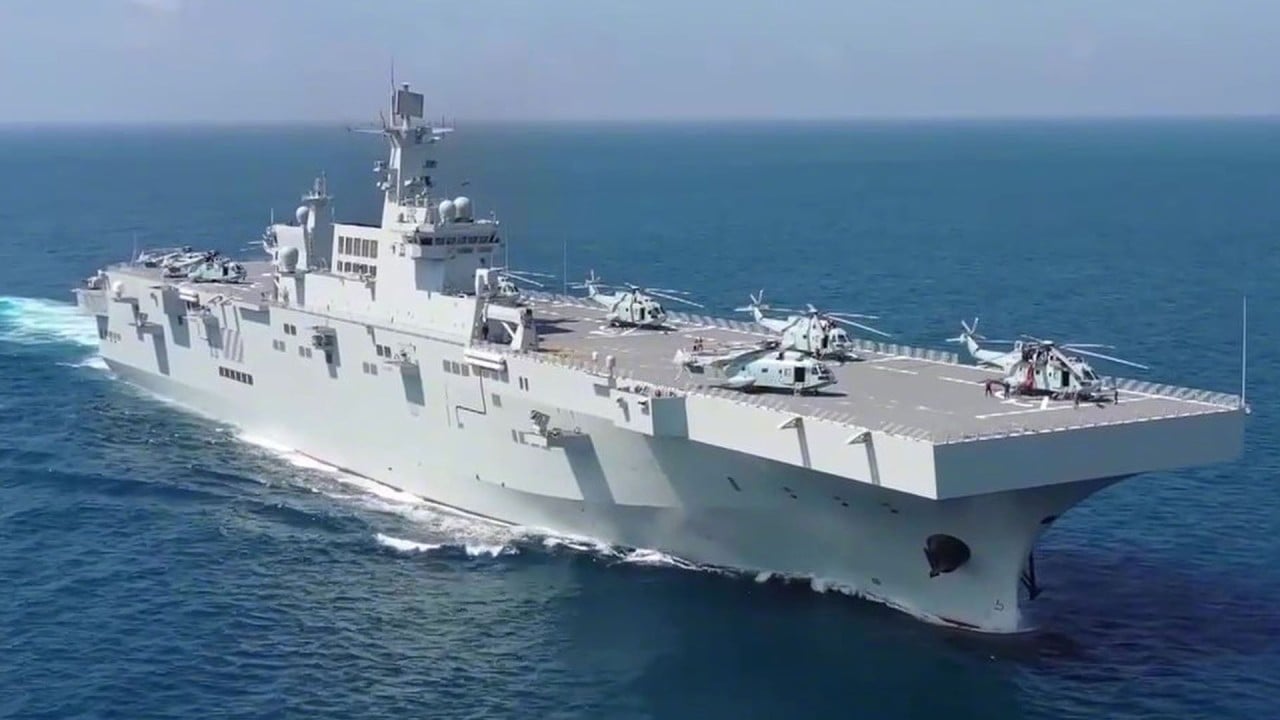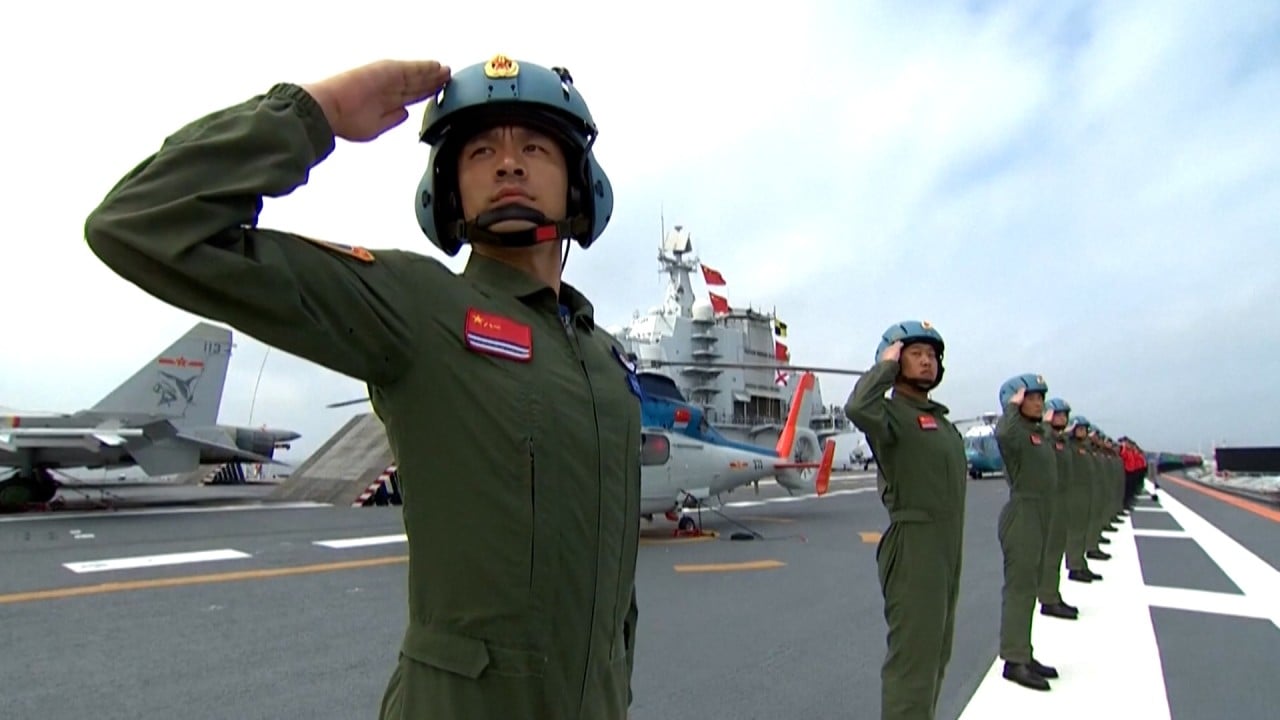
Chinese military’s potential in the South China Sea boosted by Hainan amphibious assault ship, say analysts
- The country’s first and largest Type 075-class amphibious assault ship was commissioned a year ago and is deemed useful for small island assault combat operations
- But the PLA Navy must meet the challenge of integrating the ship with the existing fleet, say military observers
However, this new combat system tested the Chinese navy’s thinking and its ability to integrate different types of vessels into a unifying framework, they added.
The Hainan is China’s first and largest Type 075-class amphibious assault ship and is the second-largest vessel type in the Chinese navy after the two aircraft carriers. Commissioned into service in late April last year, it reached initial operating capability in early March, Chinese state media reported, quoting the ship’s captain.
The Type 075 provides the People’s Liberation Army with new options for a range of missions both near China and further from its shores. In particular, the ship is useful for small island assault combat operations as well as non-war missions, including humanitarian aid, disaster relief and the evacuation of Chinese nationals.
The Hainan conducted combat training and live-fire drills aimed at enhancing coordination between personnel and weapon systems in the South China Sea on April 22, but details of the exercise only emerged on May 3 on an online Chinese military network.
The day before the drill, on April 21, the Chinese navy announced the commissioning of its second Type 075 amphibious assault ship, the Guangxi.
Zhou Chenming, a researcher at the Techxcope think tank in Beijing, said the Hainan ship contributed by boosting deterrence and more efficiently delivering supplies to the South China Sea islands.
“One Hainan ship can carry both helicopters, hovercraft and amphibious assault vehicles, so it has stronger abilities to confront foreign vessels in the region, while at the same time providing supplies more efficiently to personnel stationed in the South China Sea islands,” he said.
US Navy chief says ‘phenomenal growth’ in China’s military requires strong response
Timothy Heath, a senior analyst from US think tank Rand, shared similar views.
“The ship is designed primarily for amphibious assault operations. It can deploy amphibious armoured vehicles and helicopters to carry out a multidimensional attack on a target, such as a small island. The ship would be especially useful for operations to recover islands taken by rival claimants,” Heath said.
The initial operating capability of the Hainan vessel marks a new milestone in the Chinese navy’s gradual upgrade of its assault combat capabilities.
Traditionally, the Chinese navy has prepared mainly for missions near its shores. With the new amphibious vessels such as the Type 075 and Type 071 the PLA Navy can sail much further into the ocean and perform attacking and island-seizure missions with greater ability.
“With the launching of the latest Type 075, China has sufficient capability to seize small islands and reefs from its neighbours in the South China Sea,” Heath said.
Despite its boost to the PLA Navy’s capacity, integrating this ship with the existing fleet would be a new challenge for China, Zhou said.
“Unlike the US, which has a comprehensive support system for its amphibious assault ships, such vessels and combat concepts are still new.
“For example, China doesn’t have a lead ship like [USS] Blue Ridge. I think it will take a few more years for Beijing to think how they are going to use amphibious vessels like the Hainan, and whether China will follow the US way or can come up with a new way that fits China better,” he added.
Beijing marks 73rd navy anniversary with video of island-control drills
Although the vessel can enhance warfare ability deep in the South China Sea region, it is not expected to play a big role in a potential military mission to retake Taiwan, which is seen by Beijing as a breakaway province to ultimately be taken back.
“For a Taiwan mission, the ship could be useful but its large size and signature makes it vulnerable to strikes by a well-equipped adversary. Moreover, China still lacks adequate numbers of amphibious assault ships of all sizes to carry out an invasion of Taiwan,” Heath said.
According to the Pentagon’s “2020 China Military Power Report”, China has the biggest navy in the world with an overall battle force of about 350 surface ships and submarines, including more than 130 major surface combatants. The US Navy’s battle force is 293 ships.



